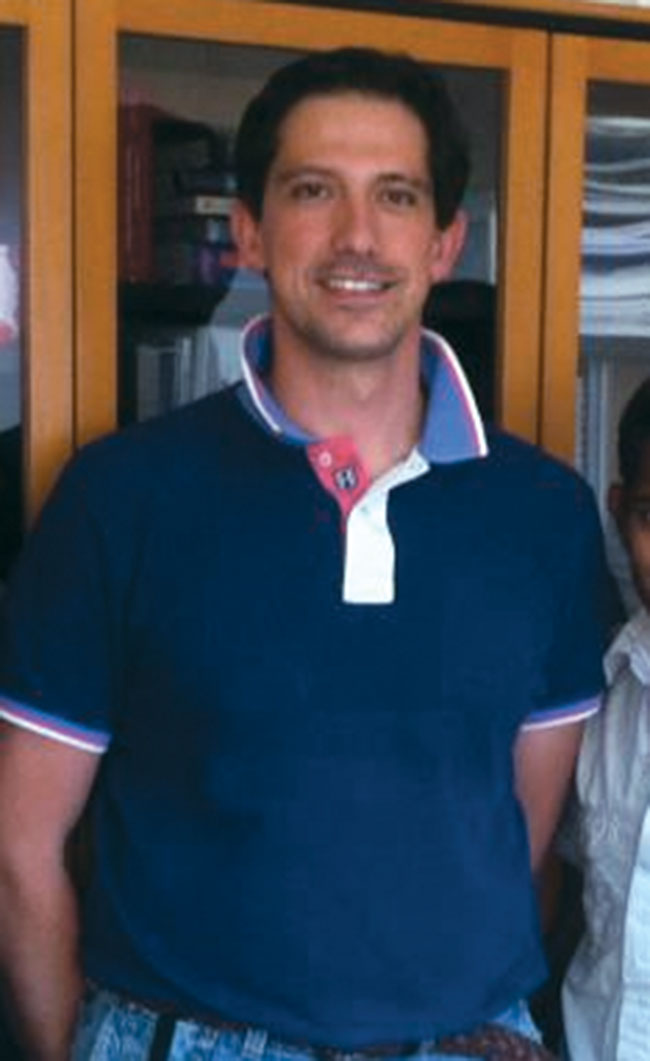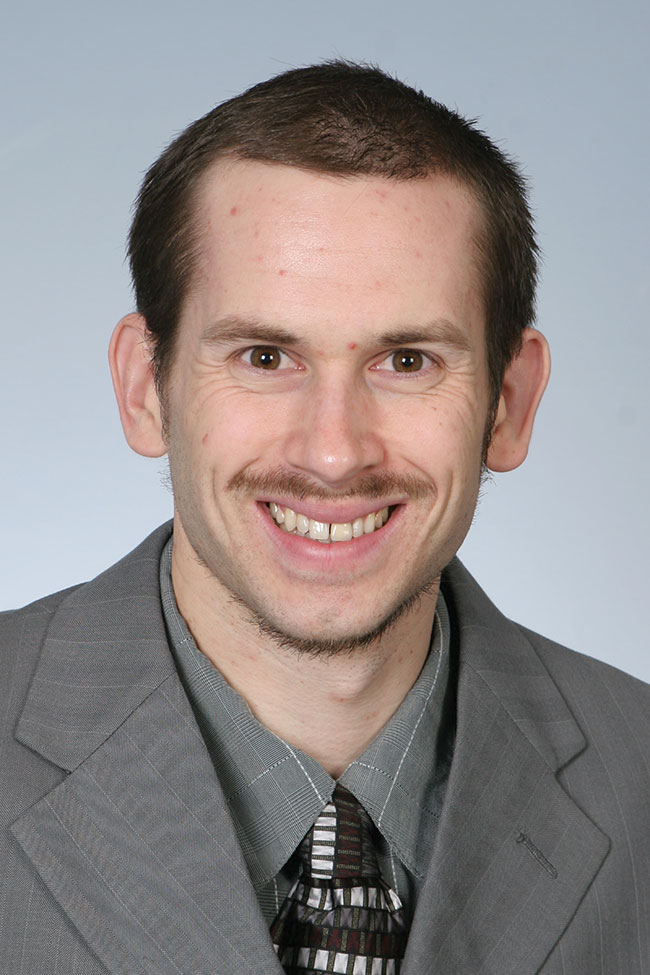
Over the last four years, Hamilton, Ont., medical doctor and pain management physician Dr. Ravidner Ohson has become a big supporter of the functional approach for assessment and treatment.
Over the last four years, Hamilton, Ont., medical doctor and pain management physician Dr. Ravidner Ohson has become a big supporter of the functional approach for assessment and treatment. He uses this approach on a daily basis and finds that patients use less medication, less diagnostic imaging, and spend less money on their injuries when he uses functional screens like Exstore, Grey Cook’s functional movements, and less conventional orthopedic exams.
“I exclusively use functional assessment and find it to be an efficient way to localize the cause of the dysfunction,” Ohson said in a recent interview. “This has saved me time as well as reduced my reliance on radiology to give me the diagnosis. This means once I rule out the red flags, by using a functional assessment system I can locate what’s wrong and send them to the chiropractor right away to restore function.”
Since the popularity of functional assessment and treatment is growing, I wanted to learn and understand how doctors and therapists from around the world use functional assessment/treatment in their practice and how they apply it to see if there are any fundamental differences from country to country and continent to continent. I interviewed 11 functional assessment and treatment practitioners across five continents. They are: chiropractors Dr. Timothy Scherz from Quito, Ecuador, Dr. Joseph Armou from South Carolina, Dr. Montgomery Harrison from Macquaire University in Sydney, Australia, Dr. Edward Jarvis from Quito, Ecuador, and Dr. Cyril Fischhoff from the Island of Mauritius; massage therapists Richard Lebert of Ontario and Ken Ansell of Saskatchewan; occupational therapist Jason Lomond of Nova Scotia; medical doctor in sports medicine Dr. Hugo Pinto from Portugal; and chiropractic students from New York Chiropractic College Kyle Neagle and Steve Martinow.
I asked each practitioner the same four questions, for a global perspective on the intricacies of the functional approach to provide clarity for practitioners and long-term benefits for patients.
1. How would you explain the term functional assessment-treatment (A-T)?
 |
|
Ansell: In general terms, functional assessment, as it relates to my practice, consists of assessing a patient’s musculoskeletal dysfunction or condition and relating that dysfunction, in functional terms, to the subjective/objective complaints. Functional treatment is a designed treatment consisting of one or several modalities to provide objective clinical improvement with respect to the assessed dysfunction.
Lomond: 1) assessment of limitations related to an individual’s ability to participate in everyday activities; 2) organizing the clinical history and exam into neurobiological and biomechanical hypothesis to explain the dysfunction; 3) treatment is directed towards the neurobiological and biomechanical factors.
Martinow: Function assessment is a means to examine the patient in a way that can tell you the “why” of what is happening. It examines the person’s specific abilities in performing precise movements. This is a purposeful assessment; an assessment of how someone moves. To assess someone functionally, we are examining the way a specific movement works. We know the literature states that many individuals who have structural problems like a tendon tear or disc bulge are asymptomatic. There is not one orthopedic test that I know of that is 100 per cent specific and 100 per cent sensitive. So what do we do when the orthopedic assessment does not tell us anything? Or what do we do even when it does? If we perform an orthopedic test and it comes out positive, it tells us something is wrong. What it doesn’t tell us is why and how this happened. This is where I believe functional assessment comes into the game.
 |
|
Pinto: Functional assessment is a way to observe the patient/athlete. When observing the patient, our main concern is to hear where the complaints and restrictions are, because that is what brings the patient/athlete to us, but mainly it’s to observe what the patient cannot perform. The functional assessment is based on, as the name says, observing the patient perform actions that he/she normally performs on a day-to-day basis and since the complaints started they cannot perform them as well or at all. In terms of athletes, it’s watching them perform their sport/technical skill.
 |
|
Armour: Functional assessment-treatment is essentially a process of evaluating a patient in order to uncover and pinpoint the individual’s altered or abnormal movement patterns and mechanical dysfunction or motor inhibition. Treatment needs to be individualized and focused at restoring lost adaptability and targeting dysfunction, not pain it self.
 |
|
Lebert: Functional assessment and treatments are an integrated method therapists use to improve the quality of care they provide for patients. Functional assessments are done by measuring a patient’s quality of movement and his or her ability to recruit muscles efficiently. Functional treatments do not focus primarily on treating the injured tissue, but instead on improving adaptability within the musculoskeletal system.
Jarvis: Starting with the patient history, learning how chronic pain is limiting activity and quality of life. Begin to use this information and exact a location of pain to formulate possible trigger point referral patterns involved. Checking gait and ease of standing from sitting to standing position before they walk to get an exam. Then have examination document through a kinesiological exam to see which main muscle groups are weak in upper and lower extremity, also including abdominal trunk muscles. Treatment consists of adjusting manual or mechanical methods, choosing a dry needling style, and myofascial work on selected muscles. Many times, the selected muscle treated will gain muscle strength; show patient the before and after muscle strength gains to improve treatment compliance.
Harrison: Functional assessment is the analysis of human motion in order to gauge the integrity of anatomy. Purpose of assessment is to rule in or rule out dysfunctional tissue. If dysfunctional tissue is identified, treatment can be applied. Purpose and strategy of treatment is to reduce dysfunction and restore normal mechanics.
 |
|
Scherz: Functional assessment and treatment means finding the movements that the patients are limited in and then improving the motor function, which can increase their performance.
 |
|
Neagle: I would explain functional assessment-treatment (A-T) to a patient as a treatment that first focuses on allowing your body to move and function better by increasing your body’s adaptive potential; instead of just trying to treat your symptoms with conservative care. For example, if a patient has problems lifting an arm, we could release certain muscles that support the shoulder girdle to help in increasing range of motion or movement for the patient’s shoulder. As range of motion improves, the body can function more efficiently and the brain can filter out the pain.
Fischhoff: It is the treatment and analysis of a specific dysfunction in a functional context (neurologically driven).
Key points about the meaning of functional assessment and treatment:
- Purpose of assessment is to rule in or rule out dysfunctional tissue
- Treatments do not focus on treating the injured tissue, they focus on improving adaptability within the musculoskeletal system
- It allows the patient to move and function better by increasing their ability to adapt without pain
2. What are the patient-centred benefits of functional assessment and treatment?
Ansell: Generally, patients come for treatment because of a specific symptom that they want a resolution to. By quickly being able to determine the root of the musculoskeletal dysfunction and providing a quick, long-lasting resolution to the problem, the patient benefits greatly.
Lomond: Current evidence indicates that bodily functions and bodily impairments do not necessarily correlate to participation limitations. Likewise, evidence suggests that participation in everyday activities is not correlated to structural impairments. The focus moves away from pain and structural impairments to function, things that may be improved. It focuses on the thing the client wants changed: function.
Fischhoff: This distinction is not so evident. Every approach is functional (e.g. Gonstead adjustment will act on muscle inhibition from a joint dysfunction. This muscle inhibition may impact the Global Control Motor Pattern, etc.). However, functional assessment (Lombardi, Craig Liebenson, McGill, etc.) gives a better idea of the global dynamic context.
Martinow: A functional assessment and treatment paradigm is a more patient-centered approach than the traditional methods. When we assess someone functionally, the patient can witness what is causing their pain or dysfunction. It is tangible – as opposed to a traditional orthopedic test, which tells us that something is wrong but does not answer the question ‘why or how did it become this way?’ For example, in my personal experience, a patient walks in with medial patellofemoral pain. We could perform Clark’s Sign (Patellar scrape) and Fouchet’s Sign along with the standard ligamentous stability tests. Assuming the ligamentous stability tests to be negative and Clark’s is positive, this could indicate chondromalacia patella or retropatellar arthritis. It does not answer why or how. Instead, we could add in functional tests such as a squat, Janda’s hip extension and abduction test with overpressure. Odds are the gluteus maximus and medius are weak, which allows the femur to slightly internally rotate, putting greater sheer on the patellar tendon and possible valgosity.
Pinto: The main benefit is that we do not centre on the consequences (pain), but always on the cause of the dysfunction (function). We always want to see what the patient cannot perform as well or at all associated with their complaints, so that we can establish a pattern of neuromuscular dysfunction that is neuro-anatomical for us to treat.
Armour: There are huge patient-centred benefits of a functional A-T approach versus a more traditional approach, because you are able to extract the exact cause of the patient’s problem rather than merely treating the symptoms. This contributes to not only outstanding clinical results, but it also helps market you as a practitioner who is able to achieve faster and long-lasting results. I have also found that this approach to care will also help you achieve fast results with complex patients who have tried many other modes of treatment (even the same ones you may already be performing.)
Lebert: How a patient perceives their injury or the way they perceive a therapist’s ability to assess and treat their injury can be a limiting factor in their recovery. Patients benefit from a functional method by seeing an immediate, demonstrable change in their quality of movement, which then leads the way to improved range of motion and decreased pain.
Jarvis: Traditional approaches can give me an idea of the severity of pain experienced by the patient, but they do not provide a starting point for the treatment. Functional assessment (weak muscles) and trigger point referral patterns help me make a decision on where to anatomically focus all the patient treatments.
Harrison: Functional assessment assesses the functionality of large areas of anatomy, which in turn allows for quicker identification of dysfunction. By using multiple functional assessments together, the doctor can further narrow down dysfunctional tissue to only a few key anatomical structures or tissue in lesion. A more exact diagnosis for the patient results in faster recovery time and ultimately less physical strain on the therapists.
Neagle: The amount of patient-centred benefits of functional A-T versus more traditional approach is absolutely unparalleled, in my opinion. The patient will physically feel and see what they are lacking via the functional assessment. The more active they are in the treatment, the more favourable the outcome becomes in a timely fashion. The objective findings are not biased in a functional A-T. If treatment is working, then the movement assessment should improve. If we go the more traditional route of simple static palpation and testing, the results of these tests can be biased to what the clinician wants to see or feel.
Scherz: I believe the patient-centred benefits of functional assessment-treatment (A-T) are also psychological. As we improve the patient’s musculoskeletal system’s ability to function, the patient can notice the difference in their strength and support. This change in function re-assures the patient that their body is on the road to healing and immediately gives confidence in the competency of the health-care provider.
Key points about how functional assessment and treatment is patient-centred:
- This determines the root of the musculoskeletal dysfunction and provides a quick, long-lasting resolution to the problem.
- Patients benefit from a functional method by seeing an immediate demonstrable change in their quality of movement, which then leads the way to improved range of motion and decreased pain.
- Traditional assessment approaches can create doctor bias, but functional approach results are directly experienced and reported by the patient.
In the next issue, the expert panel answers questions on their use of functional assessment in their practice and the potential for expanding practitioner knowledge through education.
Print this page